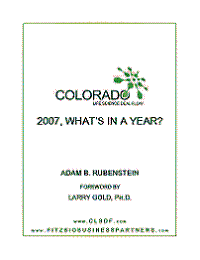
News continues to pour out of Pharmion (NASDAQ: PHRM) of late and believe it or not today’s tidbit is not related to the Celgene (NASDAQ: CELG) acquisition, rather it is focused on the MGCD0103 product for the treatment of acute Myelogenous Leukemia with development and commercialization partner MethylGene (TSX: MYG). This week proved very encouraging for MGCD01013 as Orphan Drug Designation was granted by both the FDA and their EU counterpart, the European Medicines Agency (EMEA).
In order to qualify for orphan status in the EU the therapeutic must treat life-threatening or serious conditions that are rare and affect no more than 5 in 10,000 people, to qualify in the US the product should treat conditions affecting fewer than 200,000 people. When a product qualifies for orphan status the designation provides for a host of development incentives yet perhaps most important of all, due to the economics of development, is the granting of up to a 10 year marketing exclusivity right in the EU and up to 7 years of exclusivity in the US.
MGCD0103 is a histone deacetylase inhibitor (HDAC inhibitor) The compound is currently in one Phase I trial with Taxotere® for solid tumors, two Phase I/II trials with Vidaza® for hematological malignancies and with Gemzar® for pancreatic cancer, and five Phase II clinical trials in hematological malignancies.
HDAC inhibitors are a class of drugs that interfere with the function of histone deacetylase. HDAC inhibitors are being studied as a treatment for cancer and neurodegenerative diseases. Regulation of gene expression is mediated by several mechanisms such as DNA methylation, ATP-dependent chromatin remodeling, and post-translational modifications of histones, which include the dynamic acetylation and deacetylation of epsilon-amino groups of lysine residues present in the tail of core histones. The enzymes responsible for reversible acetylation/-deacetylation processes are histone acetyltransferases and histone deacetylases. HDACs are part of transcriptional corepressor complexes. Mammalian HDACs can be divided into three classes according to sequence homology. Class I consists of the yeast Rpd3-like proteins, Class II consists of the yeast Hda1-like proteins, Class III comprises the yeast Sir2-like proteins. Inhibitors of histone deacetylase inhibitors induce hyperacetylation of histones that modulate chromatin structure and gene expression. These inhibitors also induce growth arrest, cell differentiation, and apoptosis of tumor cells.
Acute myeloid leukemia (AML), also known as acute myelogenous leukemia, is a cancer of the myeloid line of white blood cells, characterized by the rapid proliferation of abnormal cells which accumulate in the bone marrow and interfere with the production of normal blood cells. AML is the most common acute leukemia affecting adults, and its incidence increases with age. Although AML is a relatively rare disease, accounting for approximately 1.2% of cancer deaths in the US its incidence is expected to increase as the population ages.
***NOTE*** Read the new eBook CLSDF 2007 - What's In A Year? (HERE)!
If you enjoyed this post get free email or RSS updates (here).
Friday, February 15, 2008
Pharmion: Market Exclusisivity
Posted by
Adam
at
7:49 AM
![]()
Labels: CO Public: Pharmion
Subscribe to:
Post Comments (Atom)



No comments:
Post a Comment